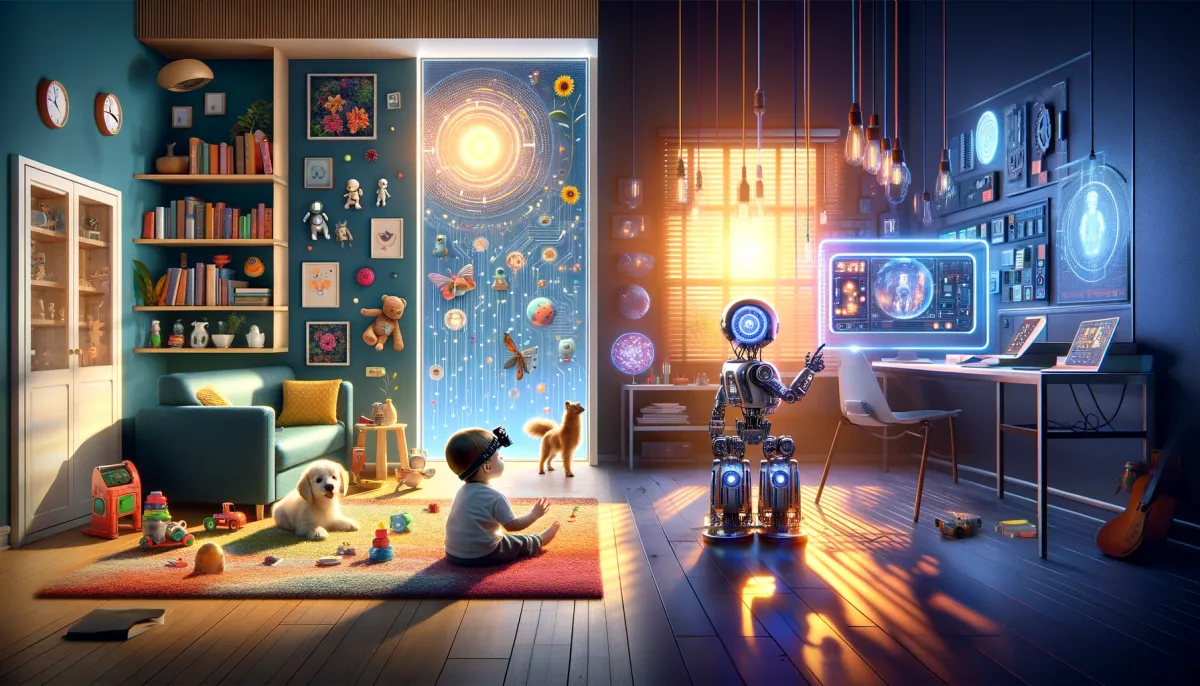From Baby Steps to Language Leaps: How a Toddler's Gaze Taught AI New Tricks

In the rapidly evolving world of artificial intelligence, the quest to mimic human learning has taken a fascinating turn. Traditionally, AI systems have been fed vast troves of data in an attempt to replicate human language skills. However, groundbreaking research spearheaded by cognitive and computer scientists is challenging this data-heavy approach, proving that when it comes to learning language, less might indeed be more.
The study in question, a riveting narrative of innovation published in Science, revolves around an experiment involving an 18-month-old toddler named Sam. Unlike any ordinary child, Sam became the inadvertent teacher to an AI, thanks to a head-mounted camera capturing 61 hours of his daily interactions. This unorthodox setup has provided invaluable insights into the language acquisition process, not just for humans but for machines as well.
By the tender age of two, most children like Sam can understand around 300 words. This number astonishingly escalates to over 1,000 by the time they turn four. The mechanisms behind this rapid vocabulary expansion have long puzzled scientists. Traditionally, it was thought that humans come equipped with innate language faculties that guide this process. However, this new study suggests the road to language mastery might be far less complicated.
The researchers, led by Wai Keen Vong of New York University, embarked on this journey with a simple hypothesis: Could an AI, without any preprogrammed linguistic assumptions, learn words just as a child does, from the chaotic and unstructured stimuli of daily life? The answer, it turns out, is a resounding yes. The team utilized a basic multimodal AI model, feeding it the world through Sam's eyes and ears. This model, equipped with vision and text encoders, managed to decipher and match images to words, demonstrating an unprecedented method of learning language.
Jessica Sullivan, an associate professor of psychology at Skidmore College who studies language development and was not directly involved in the research, hailed the study as "really beautiful." She emphasized that the findings underscore the potential simplicity of language acquisition, suggesting that perhaps all children need is exposure to the simple, everyday experiences of their environment to start piecing together the puzzle of language.
The implications of this study are far-reaching. For one, it challenges the current paradigm of AI development, which relies heavily on massive datasets. The experiment with Sam shows that with the right type of data, even minimal input can lead to significant learning outcomes. This opens up new avenues for creating more efficient and human-like AI models that can learn from a fraction of the data currently deemed necessary.
Moreover, this research highlights the power of a child's perspective in learning. The messy, unfiltered snapshots of Sam's daily life, replete with background noise and overheard conversations, were not too chaotic for learning but instead rich with learning opportunities. This suggests that the environment children grow up in, no matter how unstructured, is perfectly suited for their cognitive development.
Brenden Lake, the senior author of the study and an associate professor of psychology and data science at N.Y.U., encapsulates the essence of their findings: "Today's models don't need as much input as they're getting in order to make meaningful generalizations." He further noted that their work demonstrates the feasibility of training an AI to understand language through the sensory experiences of a single child, marking a significant leap forward in our understanding of both human and machine learning.
As we stand on the cusp of these new discoveries, one thing is clear: the journey from babbling babies to talking toddlers holds more secrets to unlocking the mysteries of language than we ever imagined. And as AI continues to evolve, it may just be that the key to its learning lies in the simple, everyday moments captured through the eyes of a child.



Comments ()